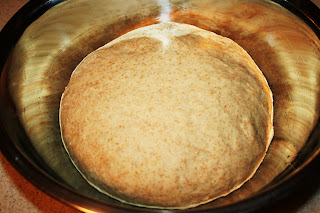If you have friends/family who would like to receive this newsletter via email, please send me a message (laura.s.cherry@gmail.com) with their address. Thanks!
Upcoming Events:
5/8 Dry-Pack Sign-Up Deadline (red wheat, white wheat, and apple slices)
Upcoming Events:
5/8 Dry-Pack Sign-Up Deadline (red wheat, white wheat, and apple slices)
5/12 Dry-Pack Canning Session 6pm @ the Thurston Grange - 6590 Thurston Road (If you would like to order for this, see info below)
5/24 Provident Living Class: Gardening by Ross Penhallegon – “It’s May – what do we do now?” 7pm @ the LDS Building - 525 66th Street in Springfield
5/24 Provident Living Class: Gardening by Ross Penhallegon – “It’s May – what do we do now?” 7pm @ the LDS Building - 525 66th Street in Springfield
Group Buy - Each month, Emergency Essentials offers food/supplies for a discounted price if you meet a minimum amount as a group. These items include freeze-dried foods, first-aid supplies, survival supplies, etc. If you would like more information on this, visit the "Group Buys" post on the blog. Each month I will provide the list of items, and if you would like any of them, just shoot me an email. The best part about this is that we get FREE SHIPPING on all Group Buy orders. That's HUGE!! It's a great way to increase your supply and save money at the same time!!
Dry-Pack Canning - Each month, we borrow the dry-pack canner from the Bishop's Storehouse. With this canner, we can seal foods/supplies in Number 10 cans, making them ready for long-term storage. We offer 3 items each month (i.e. this month we're canning dry milk, granulated sugar, and white rice) or you can bring anything you purchase on your own to the grange, and - working together - we'll put it into cans. I purchased gold fish and animal crackers this month so I can have some on hand for my son as he grows, so I'm going to be bringing those bags to the grange to put into cans. It's amazing what you can put in Number 10 cans!!
If you'd like to purchase one of the 3 items offered this month, you just need to let me know how many cans of each you would like. (Side Note: 6 cans fit into 1 cardboard carrying box)
MAY ITEMS:
***Prices have been updated to reflect the Storehouse price increase on 4-1-2011***
Hard Red Wheat $3.87/can
Hard White Wheat $3.87/can
Apple Slices (dehydrated) $7.05/can
***Prices include one the item, 1 oxygen absorber, 1 metal can, and 1 metal lid. If you would like a box and/or plastic lids, you will need to purchase them.
PURCHASING EMPTY CANS:
If you are bringing your own items to can, you will need to purchase empty cans. We sell them by the case, and even if you can give me an estimate on how many cans you will need, we'll be able to change the amount at the Grange, once you know how many you actually used. (For a reference: 25 lb bags of sugar, salt, etc. usually fit into 5-6 cans)
A case of cans costs $7.15 and it includes the following:
-6 cans
-6 metal lids for sealing
-6 oxygen absorbers (if you don't need oxygen absorbers, we will adjust the price for you)
-2 plastic reusable lids (to be used after opening the cans)
-1 cardboard box
Again, if you would like to sign up for any of these items, email me.
***Prices include one the item, 1 oxygen absorber, 1 metal can, and 1 metal lid. If you would like a box and/or plastic lids, you will need to purchase them.
PURCHASING EMPTY CANS:
If you are bringing your own items to can, you will need to purchase empty cans. We sell them by the case, and even if you can give me an estimate on how many cans you will need, we'll be able to change the amount at the Grange, once you know how many you actually used. (For a reference: 25 lb bags of sugar, salt, etc. usually fit into 5-6 cans)
A case of cans costs $7.15 and it includes the following:
-6 cans
-6 metal lids for sealing
-6 oxygen absorbers (if you don't need oxygen absorbers, we will adjust the price for you)
-2 plastic reusable lids (to be used after opening the cans)
-1 cardboard box
Again, if you would like to sign up for any of these items, email me.
The ORDER DEADLINE FOR MAY IS SUNDAY, MAY 8th!
Provident Living Classes -
Provident Living Classes will be held monthly for the rest of the year. If you have suggestions for classes you would like to see, feel free to email me with your ideas. All classes, unless otherwise specified, will be held at the Church of Jesus Christ of Latter-day Saints building on 66th Street in Springfield. These classes are open to church members, community members, youth, etc. All are welcome! We will update you on upcoming classes as soon as we have them finalized!
Upcoming Provident Living Classes:
5/24 Gardening with Ross Penhallegon – OSU Extension Agent
6/14 Retirement with Wade Bell – CPA with Bell&Morgan
7/19 Cooking without Electricity
Self-Reliance Blog -
Don't forget to check out the Self-Reliance Blog. If I can get my rear in gear, you will be able to see the following themed posts, as well as other informational posts several times a week!
Ethleen's Eat of the Week - Learn how to use your food storage in delicious recipes your entire family will love! It's not enough to keep the food, we must rotate and replace! Ethleen's Recipes are a great way to do that!
Danae's Deal of the Week - Our savvy-super-saver-shopper Danae will be providing us with some of the best deals for grocers in our area! We will also be posting links to online coupons in this section.
52 Weeks to Family Preparedness - The 52-Week Plan is designed to help families become better prepared in just 52 weeks! At the end of this course, you will have a year's supply of food, 72-Hour Kits for the entire family, Car Emergency Kits, and your family will be better prepared physically, emotional, and spiritually. They are listed by week. If you have any troubles viewing them, let me know.
As always, if you have ideas, questions, comments, or concerns, feel free to let me know!!





































